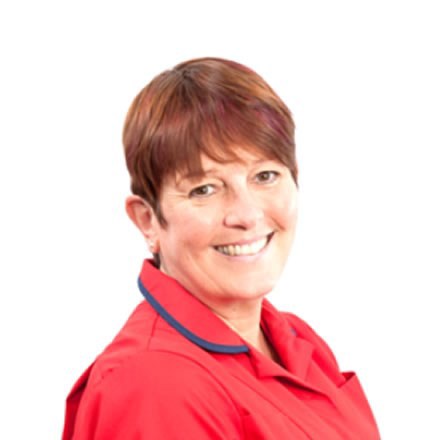Patients really have been at the centre of everything we've ever done.
I have worked at The Christie as a nurse for more than 34 years and have seen many changes along the way; not just the many patients and colleagues who have come and gone, but the changing fabric of the buildings and the ever advancing treatment technologies and nursing practices. What has not changed, however, is the Christie ethos of always putting patients at the centre of everything we do. I witnessed this myself as a Christie patient back in 1982 and realised that The Christie was where I wanted to launch my nursing career. So in September 1983 I arrived at the Christie as a newly qualified staff nurse and have been here ever since!

A significant change in the 2010s was the move towards paperless working. For nurses like me raised in a computer-free environment this proved to be a challenge. However, the introduction of patient electronic records has enabled massive improvements in the quality of the data and information recorded.
Nursing was by now branching out into all sorts of new areas giving nurses many different career opportunities. Nurses were skilled in areas that had been the sole domain of doctors back in the 1980s – minor surgical procedures, diagnostic techniques, advanced intravenous procedures and treatment deliveries, prescribing of medication to name a few. Nurse-led clinics and services were expanding and nursing students were now being educated to degree level. As a member (between 1979 and 1983) of one of the early cohorts of pre-registration degree programmes (when ‘degree nurses’ were held in suspicion and seen as a threat), I welcomed this shift.
By the 2010s I found myself working mainly in quality improvement and this provided some great opportunities for developing QI at The Christie. I worked jointly with colleagues to devise a framework for improving quality in ward areas and recognise excellence. We named the scheme The Christie CODE. We developed nursing standards in the fundamentals of care together with measures against which care quality could be determined. The development of an electronic tool allowed wards to enter measurement data and review status against the requirements of gold status accreditation.
I have witnessed all our in-patient wards achieve the standard necessary to be accredited by the Trust. While proud of their achievements, I am also very proud of the success of the scheme itself which is recognised across the trust as being reliable and robust.
So as the 2010s draw to a close how do I feel about all the changes? Was it better then or is it better now?
While I have fond memories of my early years as a nurse; nursing now provides many more opportunities for both personal and career development. The 80s represented a gentler time when patient care was less technical and nurses had more time to provide supportive care. We had time to talk to our patients without the pressure to get a dozen other jobs done!
Today patients benefit from all the regulations and new technologies that were absent in the 80s. They are now partners in their care and treatment, and there are systems in place that ensure it is delivered safely and to the highest standard. That’s not to say we didn’t give great care back in 1983 – we did the very best we could with the knowledge we had at the time and the patients were then, as now, at the centre of what we did.
May 2018
